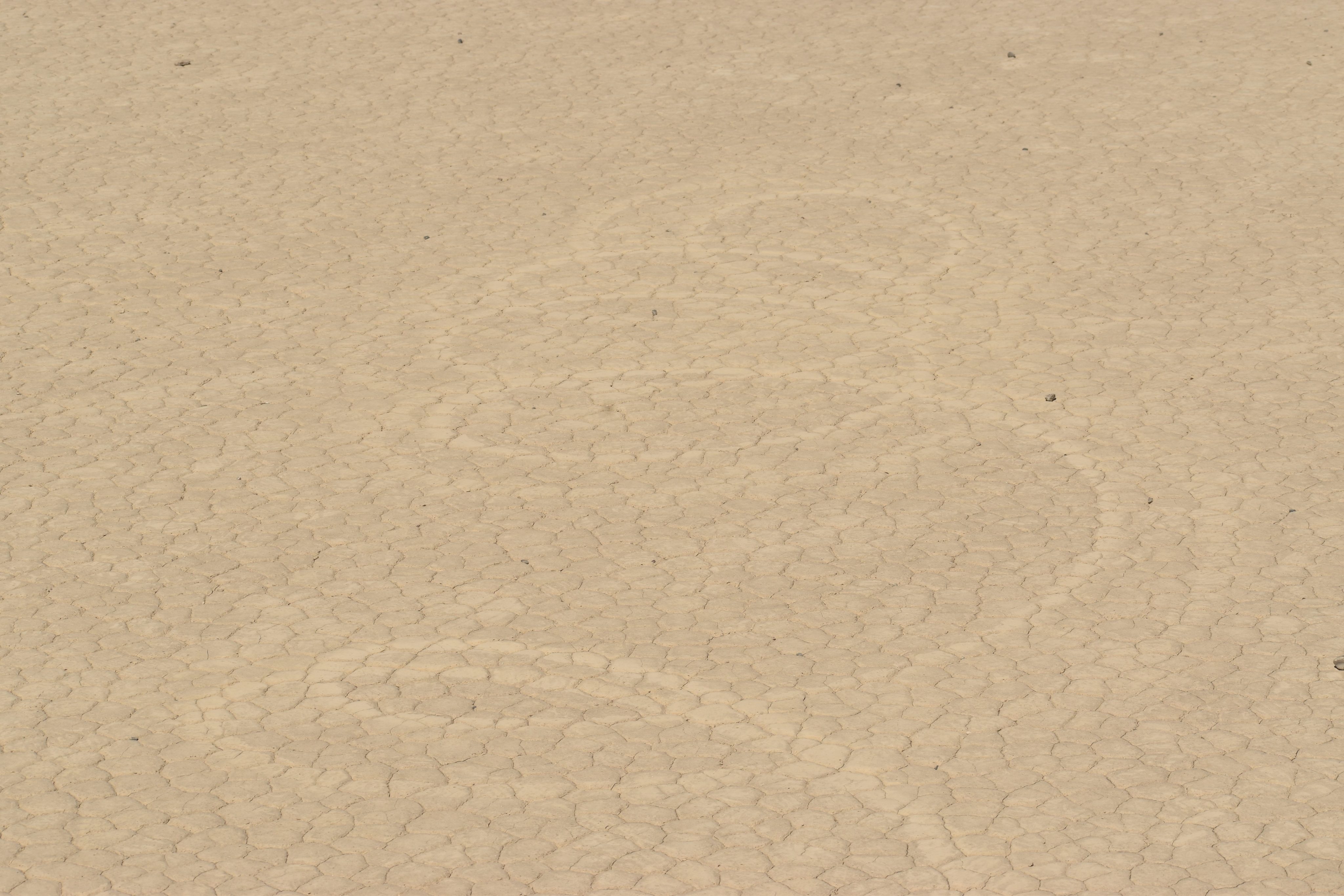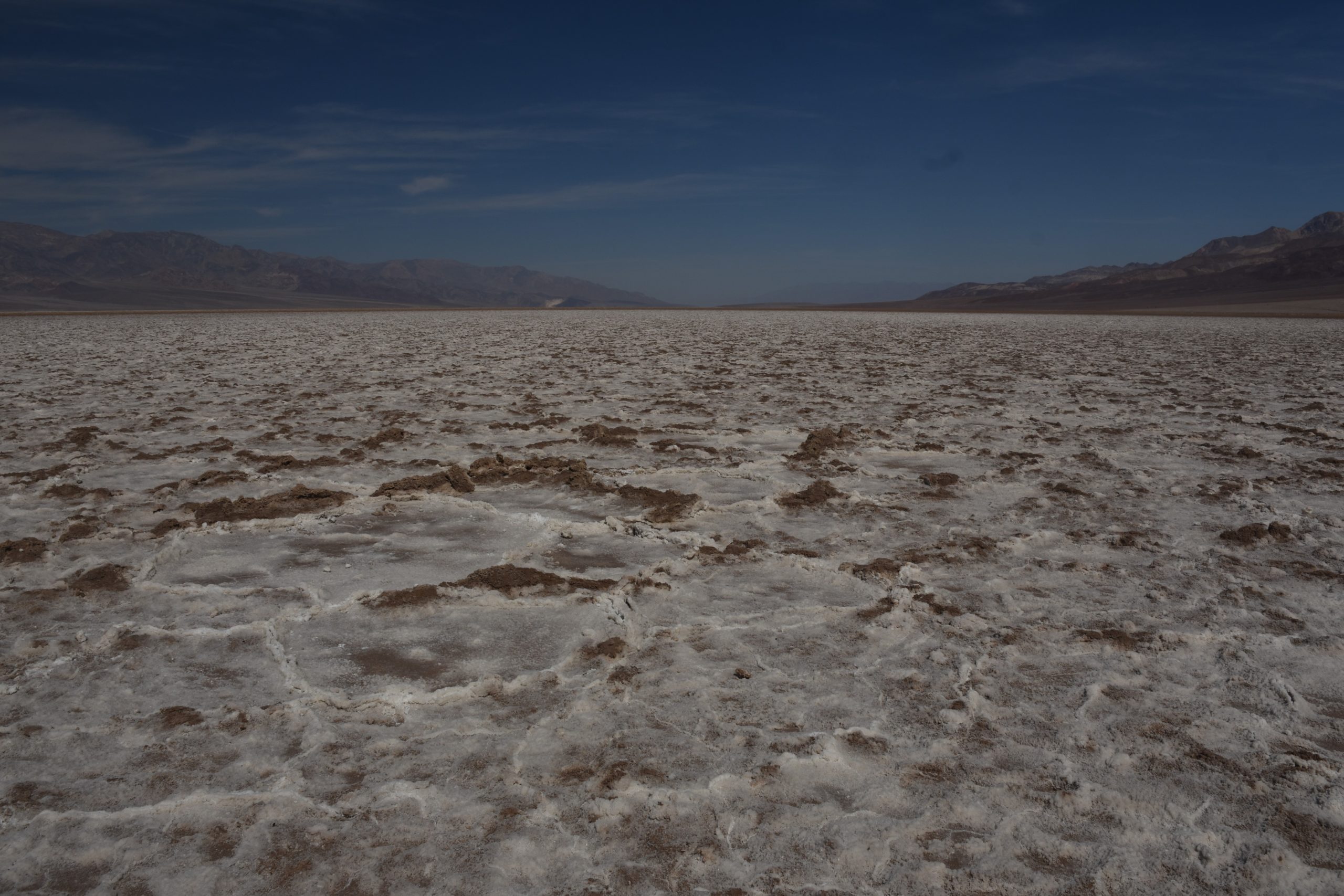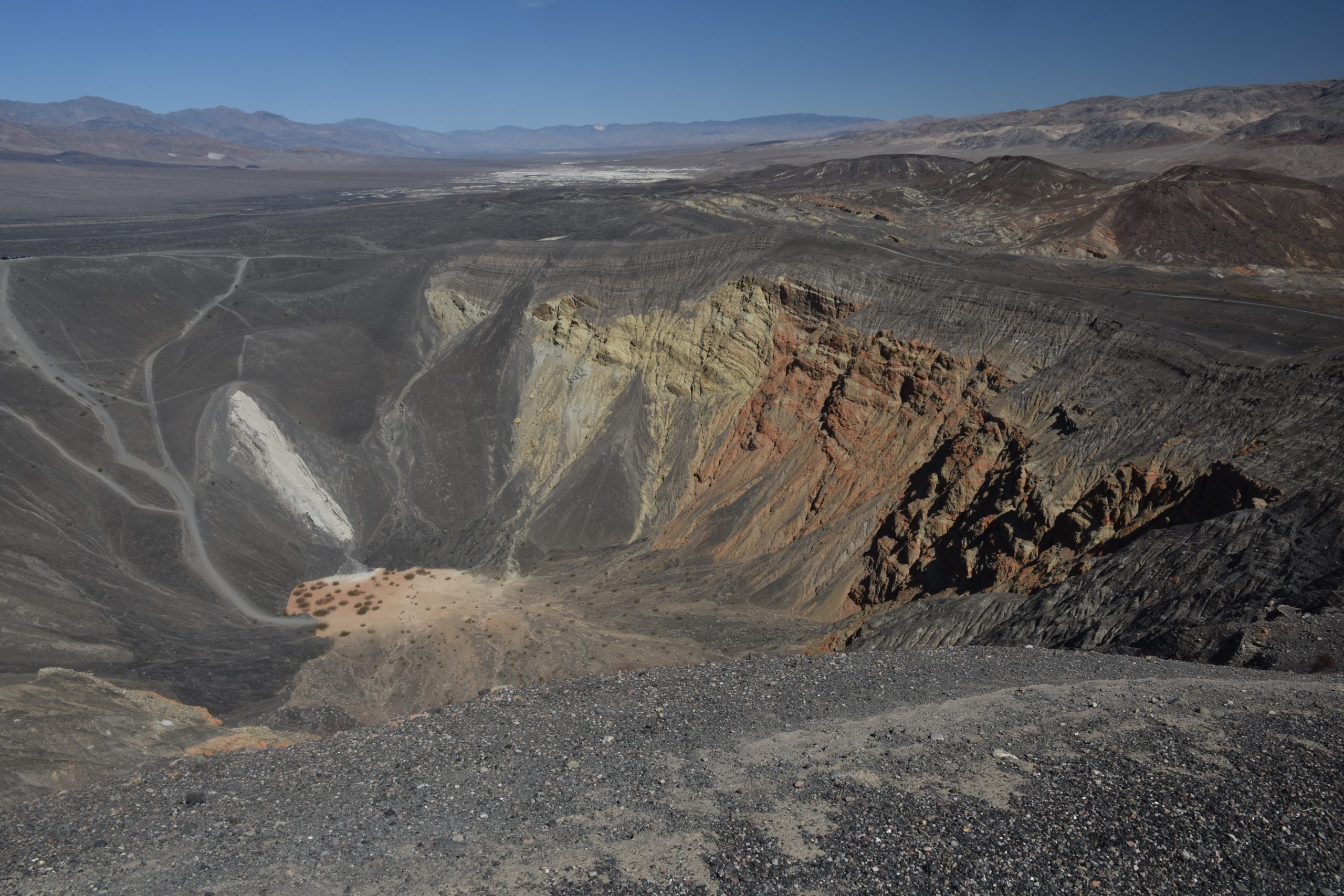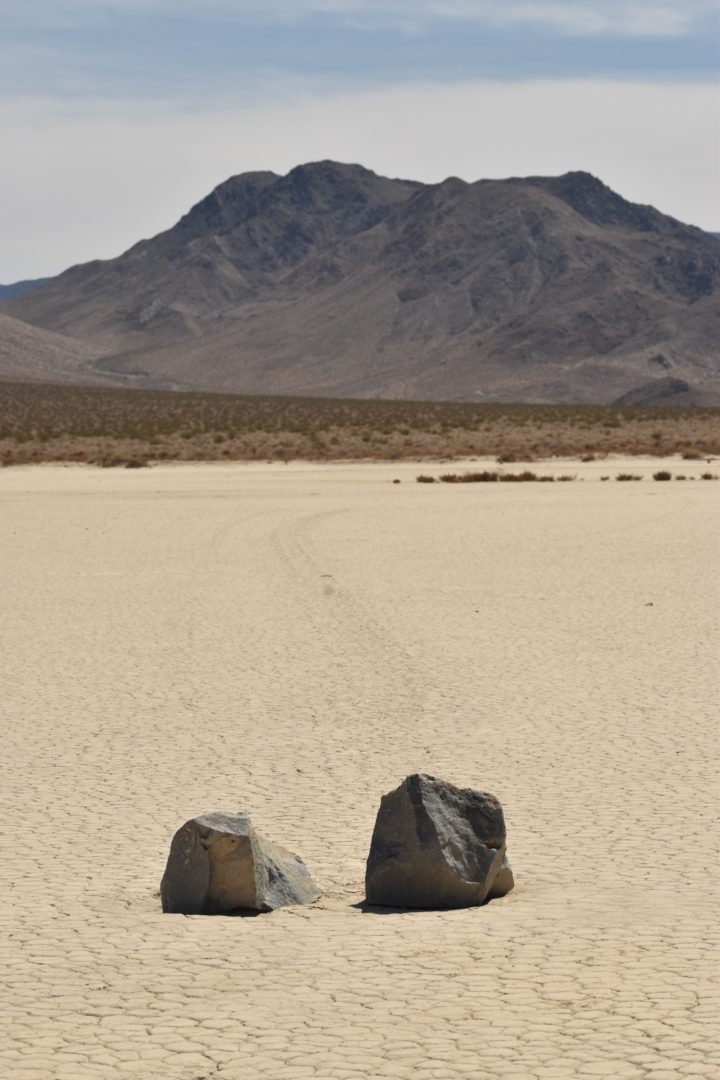The two racing rocks rush towards the finish, nose-to-nose, bump-to-bump, head-to-head, toe-to-toe, or whatever feature one ascribes to bowling ball size rocks engaged in a heated race over a temporarily undry, ice-glazed lake. All that we spectators get to see is the final moment frozen in time in the wind-eroded tracks in the rehardened and now dried mud, stretching back to the starting point seemingly out of nowhere. Not every rock at the race track is hell-bent on winning. Some have an artistic bent painting lazy loops or perhaps engaging in the calligraphy of secret rock words.

The excitement of the events takes place largely in my mind, which is in stark contrast to the rest of the sights of Death Valley. The ruggedness of the mountains expresses itself in folded contours of chocolate brown, rust red, sandy tans, lava blacks, and bruised purples. The ruggedness of the valley expresses itself in a snowfield of salt flats, a lone creosote bush defying every effort to squelch its life, a naked caldera reminding us that Death Valley can add injury to insult at its whim and ever-shifting sand dunes that quickly erase all traces of its visitors.

A man tells me the racetrack is the most overrated attraction in the park, hardly worth the sixty-mile off-road trip (on motorcycles battling loose scree and dehydrating ninety-degree temps. I added that last part.) Barely visible rock tracks might not have the glamor of the artist palette, or the excitement of finding pupfish in a spring-fed stream, or the challenge of summitting a dune, or the admiration for carpets of defiant flowers, but the racetrack has the challenge of the trip, the rocks have the mystery of their movement even knowing the explanation, and it doesn’t hurt to indulge your imagination in a place that absolutely inspires it.

